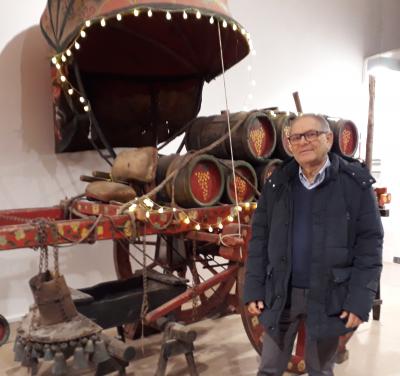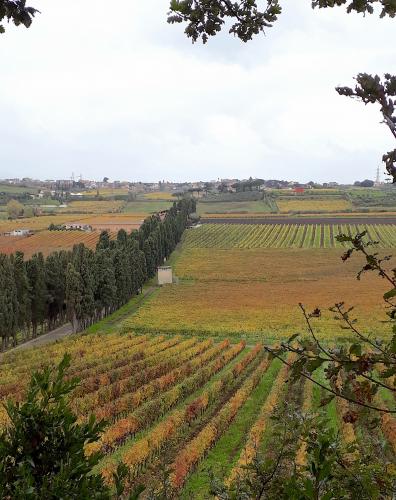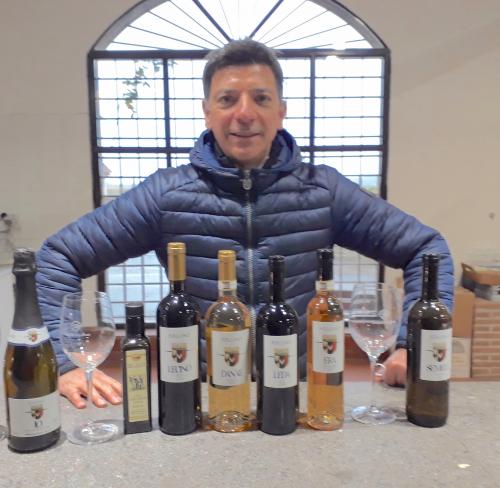Frascati, the wine of popes and kings

ROME -- For over three thousand years the rich volcanic soil of the Alban hills in the Roman countryside has provided an ideal terrain for the production of wine. According to tradition, it was the god Saturn who taught Aeneas (mythical forefather of the Romans) and his son Ascanius the secrets of vine cultivation and pruning. Apart from the legends, however, archaeological research has demonstrated that grapes were, in fact, already grown on the Tusculum hill at Frascati in the 5th century B.C. During the Roman Republic the wine of the Frascati area was so much in demand that producers couldn't keep up. Vineyards continued to flourish and expand throughout the period of the Roman Empire until the emperor Domitian forbade new plantations, fearing that too much land was being diverted from wheat growing.
Despite attempts to limit production, the wine from Frascati continued to be the Ancient Romans' favourite tipple. Down the centuries, it continued to find favour with the Renaissance Popes and later with the foreign visitors of the Grand Tour, who flocked to the hostelries in the charming Castelli Romani villages. Goethe, in fact, is said to have called Frascati “a Paradise”.
In the 20th century, however, this honey-coloured nectar somehow lost some of its lustre. It became cheap and somewhat banale, an everyday accompaniment to the average Roman's lunch and dinner, a vin ordinaire, demoted from its elevated status of the past.
So what happened? Why did noble Frascati become ordinary Frascati? The principal problem again – but for different reasons - was over-production. In order to satisfy ever-increasing demand, producers began to concentrate on quantity, rather than quality.
Fortunately, however, this trend has been completely reversed, explained Felice Gasparini, President of the 186-member Frascati Wine Producers Consortium, when we visited him at his Colle Felice estate: “For many years, Frascati was considered to be the wine of the ordinary Roman people – the ones who gathered in the taverns, like in the Pinelli etchings. Growers and winemakers concentrated on supplying as much of it as possible. The concept of quality over quantity came with the young post-war generation and this has been the guiding principle ever since.”
Villa Franca, Gasparini's cellar, produces the top of the range Frascati Superiore Riserva DOCG. In 1966, Frascati was one of the first four wines of Italy to obtain DOC registration. The prestigious DOCG (Denomination Controlled Geographic Origin) was awarded in 2011 to the historic Cannellino di Frascati, which we sampled when we toured the prestigious Pietra Porzia estate in the Prata Porcia area under Frascati. Cannellino is a sweet dessert wine, historically produced in the Castelli Romani area, and traditionally sampled with local ciambelline al vino (typical wine biscuits).
The 55-hectare Pietra Porzia estate is situated in a volcanic crater scooped out of the slopes of the Alban volcano after its eruption some 600,000 years ago. This wide and fertile hollow, blessed with a mild climate and well-drained lapilli layered soil, is home to seven wine farms, including Pietra Porzia, the neighbouring De Sanctis organic estate and the exclusive Merumalia Wine Resort.
Pietra Porzia estate manager Michele Russo took us around the spacious direct sales outlet and the modern cellars lined with towering stainless steel tanks, that nurse thousands of litres of gently fermenting wine.
“We no longer use wooden barriques,” he explained. “We believe they contaminate the characteristic flavour of the grapes. Stainless steel casks are better for preserving the individual characteristics and the personality of the wine.”
Frascati Wine Land undulates languidly over a hilly territory that varies in altitude from 70 to 500 metres above sea level. Many vineyards face towards the Mediterranean to get the benefit of the sea breezes. The particularly mild climate in the early months of autumn allow the grapes to mature slowly, developing the typical flavour and bouquet. There is no Frascati red. Only white grapes are used, produced from blends of Malvasia and Trebbiano, with some addition of Bombino and Bellona. The Frascati wine tradition owes much to its last feudal overlord, Marcantonio Colonna, who, in 1515, designated the areas where vineyards could be planted and disciplined the times and methods of harvesting.
It came as a surprise to learn that the home of Frascati DOC and DOCG is not confined within the boundaries of Frascati, but includes the towns of Grottaferrata, Monte Porzio Catone and a part of Montecompatri, as well as a portion of the VII Municipality of Rome. In fact, the biggest proportion of denomination Frascati wines (46 percent) is actually produced in City of Rome territory. The remainder comes from Frascati itself (36 percent), 8 percent from Grottaferrata, and the rest from Monte Porzio Catone and Montecompatri. Total yield - as of the 2021 harvest – is a bountiful 53,000 hectolitres.
Frascati is no longer the exclusive wine of Rome. It has gone international as more and more consumers worldwide have discovered its fresh and distinctive taste, recalling summer with overtones of “white peaches, blanched almonds, wildflowers and hay”, as one oenologist describes it in the typical lyrical lingo of the trade.
Visiting the Frascati vineyards on a classic tourist wine tour is an all-round experience that includes not only sampling the products of the cellars but dipping into a fascinating world of the past.
The wealthier citizens of Ancient Rome were not slow to appreciate the benefits that Nature offered in the pleasant hilly environments less than a day's ride away from the bustle and intrigues of the capital and the area is full of the remains of former luxury villas and farming estates.
Frascati, with its sweeping views over the Roman plain, was a favoured retreat, chosen by VIPs like Cicero and Cato. Countless traces of the homesteads and holiday retreats of other, anonymous aristocrats lie buried all over the area, incorporated into modern wine estates, where the owners carefully preserve these vestiges of the past.
The picturesque 17th century casale (farmhouse) of the 30-hectare Casal Montani estate sits on top of a massive Roman cistern, which is still functioning today. Owner Andrea Evangelisti took us through the dimly lit tunnels of the wine cellar that lie under the original stone base of the vast water tank. “We're walking underneath 350 cubit metres of water!” he told us. Scary stuff – even if we are assured that the ceiling has held for 2000 years! His cellars are also a museum, containing pieces of masonry from the Roman villa that once occupied the spot, huge terracotta amphorae from Tuscany and even a rare Mithraic sun symbol scratched on a wall by long-ago worshippers of that mysterious god. Upstairs, a section of original Roman mosaic pavement with a floral motif has been preserved in the floor of one of the rooms.
The Prata Porcia crater is commonly believed to be the site of the former Lake Regillo, where, in 496 B.C., the legendary battle took place that established the supremacy of Rome over the Latin peoples. Although the lake itself is long gone, the Regillo spring can still be seen at the top of the estate, where it emerges crystal clear from the rocks and flows into an underground pool. The remains of a Roman temple have been discovered on the site and fragments of marble columns are scattered around in the grottos and tunnels of the cellar.
Many of the Frascati estates offer a range of complementary activities, besides the normal wine tasting sessions and the sale of local produce. These include hospitality and restaurant facilities, wedding and events arrangements, sports, excursions and family-orientated amenities in the best traditions of the farm holiday format, with the added inducement of a trip into the legendary historic world of the wine cellars to sample the exclusive “wine of the Romans.”
Ms-ln


© COPYRIGHT ITALIAN INSIDER
UNAUTHORISED REPRODUCTION FORBIDDEN


